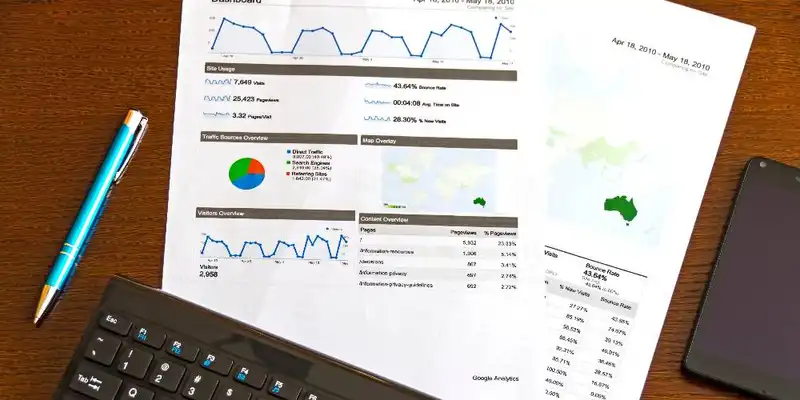5 Ways You Can Use Business Data Analytics to Boost Sales
Company expansion relies heavily on its access to business data, reporting, and analytics. Therefore, businesses should prioritize their information technology by implementing advanced solutions that streamline communication to optimize their scalability.
Organizations that still utilize traditional systems to track inventory, sales, and transactions limit their growth due to inefficient operations and data exchange. However, companies with automated business processes have access to data analytics and insights regarding all services. This allows management to create a data-driven plan of action to promote profits and expansion.
Data Analytics and Big Data

Business data is an extensive collaboration of information from various task performances. This database collects rates, speed of information exchange, and data scope from multiple services and formats. This internal information integrated with data from external resources is known as big data.
Big data is accessed by pulling qualitative and quantitative information from structured and unstructured sources that are internal or public. Structured data is already entered into a spreadsheet or organized format, so it is easier to comprehend.
For example, information retrieved from inventory control software may already be itemized by the system. Unstructured data is any information that is not already prepared or molded into a model. Businesses can pull unstructured data from social media, for example, to gain insight into customer reviews and experience.
Business data is not often stored physically, but on a cloud-computing software with high functioning reporting and connectivity capabilities. By utilizing a web-based network, information is available to management and business analysts.

Business data analytics takes this raw information and generates reports and analyses to form conclusions. Oftentimes software with programmed algorithms and personalized calculations are used to create comprehensive reports.
Business analyses use data to pinpoint which operations are underperforming and excelling. The reports also help management create a plan of action to improve necessary functions based on specific standards. Analysts can interchange these standards to gain insight on different criteria. This process typically follows four steps-
1. Determine the Data Requirements - Categories can be set by age, demographic, race, income, gender, or any organization method applicable to the company.
2. Collect Data - Information can be collected through online resources, personnel, or software.
3. Organize Data - Data analysts take the raw information and run it through software to generate statistics and reports.
4. Final Check - Before the analyses are passed on, the information is double-checked to ensure there is no repetitive data or errors.
The primary goal of business analytics is to optimize operational efficiency and overall performance through data-driven decisions.
5 Ways a Business Can Use Analytics

Big data analytics promotes decision-making for any business operation. Having access to thorough analyses allows organizations to make quick, informed decisions to stay competitive within their industries. Common ways companies use business analytics include-
1. Boost Customer Loyalty
Customers are a company's biggest asset and therefore, should remain the top priority. Establishing a stable customer base ensures a company can maintain sales, profits, and their bottom line. However, as markets get increasingly more competitive, customer loyalty can be jeopardized. It is easy to offer low-quality goods to attract new buyers, but this will not promote long-term retention.
By using big data, analysts can monitor customer behavior, sales, and interests to detect patterns and trends. The more information is collected, the more plans management can implement to enhance consumer experience and satisfaction.
For example, in 2015 Coca-Cola developed a loyalty program to strengthen its data collection with customer insights. The loyalty program enables consumers to express their opinions and leave reviews, providing first-hand critiques. The company director noted that their data strategies are the reason for their excellent customer loyalty and retention.
2. Marketing Insights
The marketing sector requires a significant amount of capital to run advertisements. Therefore, it is essential for directors to have access to customer data analyses in order to create effective promotions and targeted campaigns. Without meaningful data that reveal why customers may want a specific item or service, businesses can waste thousands of dollars on unsuccessful marketing campaigns.
Analyses can help marketing teams develop effective promotions by showing insights on online activity and transactions. With this information, a targeted campaign can be created that reduces the initial investment by limiting advertisements on specific items, customer demographics, or product lines. Systems can then monitor how well a marketing campaign performs based on customer perception, respective sales, and reviews. This data allows marketers to alter tactics that did not prove to be effective.

3. Risk Management
As industries become more competitive and the economy shifts, businesses should have appropriate risk management. Developing a risk management plan ensures that a company can remain profitable regardless of the uncertain future.
Reporting data from internal and external operations is essential to prevent risks adequately. From third-party vendor pricing to fulfillment efficiency and reports, analyses can help management create back-up plans.
4. Product Development
Especially when innovating or developing new products, big data is essential to ensure item improvement. Many tests are done when creating new designs to determine how customers react to different images and aesthetics. Once the rebranding is complete, businesses must ensure that manufacturing the product is time and cost-efficient.
Business data can track production costs, competitor pricing, and customer feedback to optimize product development success. For example, Amazon developed their Fresh and Whole Foods markets by using big data to track customers' preferences. Through analytics, they were able to comprehend how consumers prefer to buy groceries and interact with suppliers.
5. Supply Chain Management
Collecting data from everyday operations throughout the supply chain allows management to recognize trends and implement tools to improve efficiency and reduce costs. From analyzing vendor pricing to understanding how production costs limit profit margins, businesses can make informed decisions on how to drive profits.
This extends to the storefront, where customers interact with products. For example, PepsiCo aggregated data from their multiple warehouses, point-of-sale (POS), ordering, inventory control, and demand forecasting systems to gain a broader scope of their performance. Through this analysis of big data, they ensure all of their shelves are stocked, reorders are processed, and shipments are fulfilled so sales and profits can be maintained.
Business data is a vital resource that companies must have in order to make critical decisions within their supply chain, marketing promotions, and customer relationships. By taking advantage of big data analysis, organizations can ensure their longevity and promote expansion.





